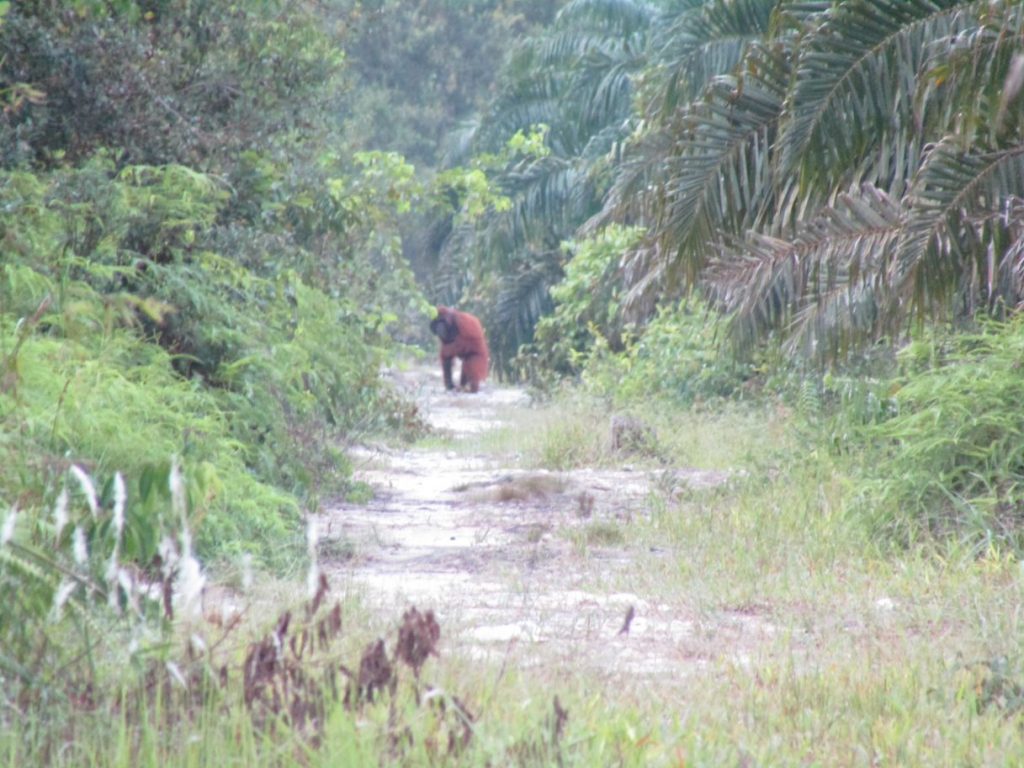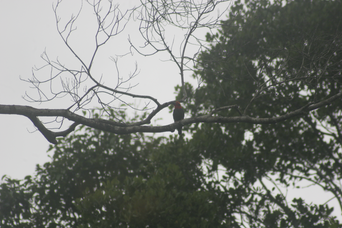
Telaga Village Forest (HD) (± 2,758 ha) is located in the lowlands with a gentle topography (7-22 masl) and has an important position as a catchment area for the Kelaru River, which is part of the Katingan watershed. HD Telaga consists of secondary swamp forests (2,032.96 ha) and swamp shrubs (735.481 ha). The condition of HD Telaga can be categorized as good based on biodiversity. This is known through the results of a biodiversity survey by LPHD Telaga on March 22-28, 2022.
Telaga Village Forest LandscapeBiodiversity flora in HD Telaga can be found a total of twenty-six (26) species in secondary swamp forests dominated by Tumih (Combretocarpus rotundatus), Gerunggang (Cratoxylum arborescens), and Kelat (Syzygium spp) species. In comparison, eight (8) species in swamp shrubs are dominated by Tumih (Combretocarpus rotundatus). The dominant plant species based on the number of species is the Myrtaceae tribe, while the dominant plant species based on the highest number of individuals is tumih (Combretocarpus rotundatus).

The total diversity of flora species found in HD Telaga is 27 species, and 1 of them is included in high conservation value (HCV 1), a carnivorous plant, namely kantong semar (Nepenthes ampullaria). Two (2) species are categorized as endangered (EN) based on IUCN status, namely Meranti Kuning (Shorea teysmanniana) and Alau (Dacrydium pectinatum).
The biodiversity of fauna in HD Telaga found 14 species of mammals, 77 species of birds, and eight species of herpetofauna. Of mammal species, eight (8) of them are categorized as high conservation value (HCV 1), and two (2) mammal species are endemic, namely Bornean Gibbon and Bornean Orangutan. In bird species, seven (7) species are included in the HCV 1 category, including the Greater Green Leafbird and Long-tailed Parakeet, and two (2) bird species are endemic, namely the Bornean Goat Hornbill and the Bornean Stone Hornbill


The biodiversity survey at Telaga HD was conducted using qualitative research methods, which assessed the adequacy of the representativeness of the data collected in a particular area. Biodiversity surveys are also based on objectives, data collection, analysis procedures, and interpretation of results and written reports. The survey results can be used as a basis for decision consideration by LPHD Telaga and the authorities to realize the goal of protecting high conservation areas in Telaga HD.